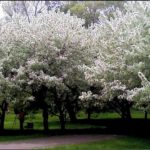BOROBUDUR – A JOURNEY TO NIRVANA – by Bernard VanCuylenburg
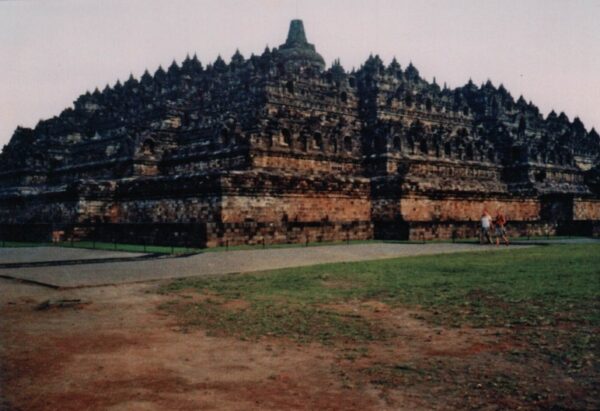
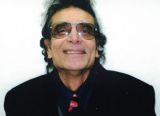 Lost and forgotten, the temple lay in the heart of a thick forest embraced by a mantle of green, its ancient walls smothered by vines, ferns and shrubs of every description. By day and at night, the only sounds were those of the leopard, or the shrieking of monkeys, the piercing trill of birds, and other denizens of the jungle. For over a thousand years, Borobudur the largest Buddhist monument in the world, was a word that was only a spectral memory, confined to the realms of invisibility. The eternal reverie of this architectural marvel came back to life in 1815 when it was rediscovered by a Dutch Engineer working under Sir Thomas Raffles the Governor of Java. This chance discovery which was one of the greatest archaeological discoveries at the time revealed the magnitude of the builders and architect’s skills to a stunned world. It sent ripples of excitement through historical and archaeological seats of learning, and to this day continues to enthrall visitors leaving them bewildered with wonder. Borobudur is not just a Buddhist temple in the ordinary sense of the word. It is a colossal Buddhist Monument in which the teachings of the Buddha have been bought to life by the excellent sculpture and the relief panels to be seen. As you begin your visit at ground level, you embark on a journey through which, by the time you reach the third tier of this colossus, you have practically “read” the teachings of Lord Buddha depicted in all the sculpted relief panels with a level of skill beyond this world.
Lost and forgotten, the temple lay in the heart of a thick forest embraced by a mantle of green, its ancient walls smothered by vines, ferns and shrubs of every description. By day and at night, the only sounds were those of the leopard, or the shrieking of monkeys, the piercing trill of birds, and other denizens of the jungle. For over a thousand years, Borobudur the largest Buddhist monument in the world, was a word that was only a spectral memory, confined to the realms of invisibility. The eternal reverie of this architectural marvel came back to life in 1815 when it was rediscovered by a Dutch Engineer working under Sir Thomas Raffles the Governor of Java. This chance discovery which was one of the greatest archaeological discoveries at the time revealed the magnitude of the builders and architect’s skills to a stunned world. It sent ripples of excitement through historical and archaeological seats of learning, and to this day continues to enthrall visitors leaving them bewildered with wonder. Borobudur is not just a Buddhist temple in the ordinary sense of the word. It is a colossal Buddhist Monument in which the teachings of the Buddha have been bought to life by the excellent sculpture and the relief panels to be seen. As you begin your visit at ground level, you embark on a journey through which, by the time you reach the third tier of this colossus, you have practically “read” the teachings of Lord Buddha depicted in all the sculpted relief panels with a level of skill beyond this world.
On a beautiful Javanese morning slightly shrouded in mist when the golden rays of sunshine were beginning to greet the dawn of the day, I took my first steps towards this miracle in stone as I perceived it looming large and inviting beyond belief, hardly believing my eyes. I was looking at a sight from an ethereal world. I was on a six week tour of Indonesia and this to me was an odyssey of the soul because Borobudur was the highlight of my visit to this beautiful and beguiling country.
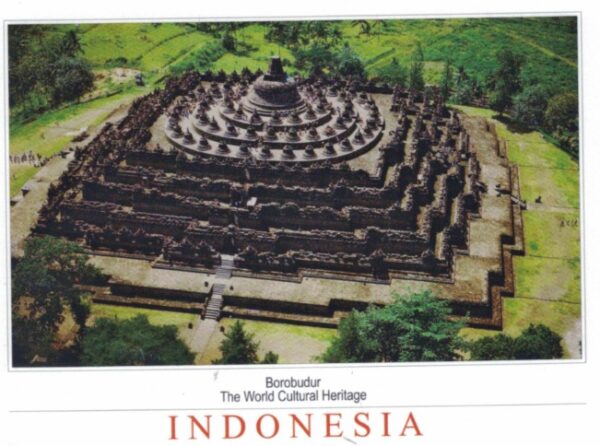
Today Borobudur is as enigmatic, mysterious, and beyond beautiful as it was over 1200 years ago. When first “discovered” in 1815 it was a tangle of statues displaced from their pedestals by enormous roots, some locked in the embrace of giant branches while others lay hurled to the ground. When fully excavated, Borobudur caused the world to hold its collective breath as the complex intricacies in her statues, carvings and construction were revealed. The Architect or Architects, the Builders, the Surveyors the Stone Masons, Stone Cutters, and the Intelligentsia harnessed to embark on this massive project had to be beyond brilliant ! The Blueprint of the complex was that it had to be built in the form of a Buddhist symbol known as a “Mandala” which is a representation of the cosmos. An aerial view today shows the entire temple resembling a colossal “Mandala” – in other words, a vision of the cosmos in stone. At the base, it begins in the daily world one lives in and then spirals up to Nirvana. A series of reliefs at the base represent a world of sin, and only the good are rewarded by a higher standard of life in reincarnation. Along the Pilgrim’s Walk which is about 3.2 miles, the Master Sculptor has excelled by carving some richly decorated narrative panels which is a doctrine of Buddhist teaching. There are panels of Queen Maya, and the birth of Prince Siddhartha Gautama, and his journey to enlightenment. The third platform of the monument by its circular shape, symbolizes Nirvana which never ends. The outcome of this stroke of genius was that a pilgrim could walk from the base of the temple to the very top through two miles of corridors and stairs by “reading” the panels on his/her last journey. If a devout pilgrim “fine tuned” his/her antenna to the religious sensitivities and the message on the panels, he or she would literally “see”and “hear” the messages in the Dhammapada on her journey to Nirvana.
Although mystery surrounds the origins of Borobudur since there are no records of its construction,
radio carbon dating confirms that it is over 1200 years old. The consensus among Historians and Archaeologists is that work on Borobudur commenced in the mid to late 8th century by rulers of the Sailendra dynasty.
JOY AND DESPAIR.
Built between 778 and 824 CE during the reign of King Samaratungga of the Sailendra dynasty, the mammoth task of conforming to the Architects plans would have daunted lesser men. But a massive labour force was recruited and it is estimated that 70,000 cubic metres of stone was hewn, transported and carved during construction. I first heard of Borobudur from a book which I borrowed from my library 35 years ago. When I read the name “Samaratungga” my heart leapt for joy ! This is a Sinhalese name and the thought that a King of Lankan ancestry possibly had some connection with royalty in this part of Indonesia filled me with eagar anticipation ! When I broached the subject with my Guide who incidentally was well versed with the local history of the area, he very politely gave me chapter and verse of their ancient history which proved that although “Samaratungga” sounded like a Sinhalese name, it was one hundred percent indigenous. That burst my bubble and I hid my disappointment bravely with a lot of diplomacy ! He then proceeded to give me some building statistics which he stated was the opinion of some of the learned Building Engineers of the day.
Borobudur he told me was built from two million stone blocks in the form of a stupa symmetrical in shape around a small hill. The monument stands on a base measuring 118m by 118m. It has six square terraces with four circular ones at the top, which is reached by four gateways. Linguists inform us that the word “Borobudur” is derived from Sanskrit and means “Vihara Buddha Uhr” which in turns means “The Buddhist Monastery on the Hill”. We know now that it is more than just a ‘Monastery’ – it is a pristine Buddhist work of art unequalled anywhere in the world. Nature too has lent a hand because Borobudur is located in stunningly beautiful landscape and locals call it “The Garden of Java”.
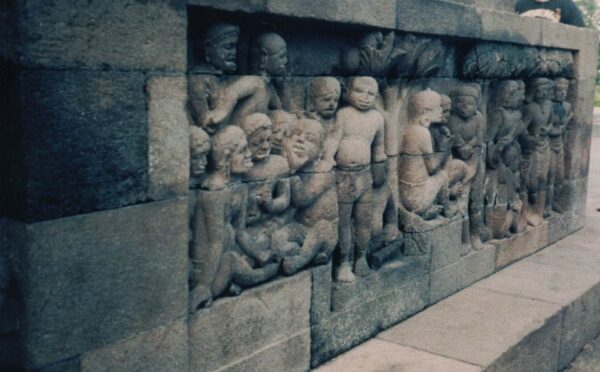
Historians infer that in the 10th and 11th century this magnificient jewel in the crown was abandoned
due to the shift of political power to East Java, following the decline of Buddhism. Like the mystery surrounding its construction, Archaeologists are at a loss to understand why it was abandoned (possibly due to volcanic activity in the area ?) and thus followed Borobudur’s long dark night of the soul where it lay buried in the jungle until its chance discovery in 1815. My Guide informed me that in 1975 the Indonesian Government began a massive cleaning and restoration effort in partnership with UNESCO, and this resulted in the Monument gaining worldwide attention. It was granted UNESCO World Heritage Status in 1991 and is today the most popular tourist site in Indonesia.
I found Indonesia to be a land of Mother Nature’s masterpieces, its geography offering extraordinary natural diversity, and excelling in outstanding natural beauty. Mountainous and wild, richly forested and deeply rural, picture book scenic views come at you from all angles – and looming in the distance are the volcanoes which ominous as they look, somehow add to the scenic beauty. It is a cultural conundrum as thrilling as it is overwhelming. The country held an inexhaustible fascination for me in its culture art and history. In the villages, traditional lifestyles are maintained even in the face of rampant modernisation. The adventure is endless. What you make of it is up to you.
Bernard VanCuylenburg.










